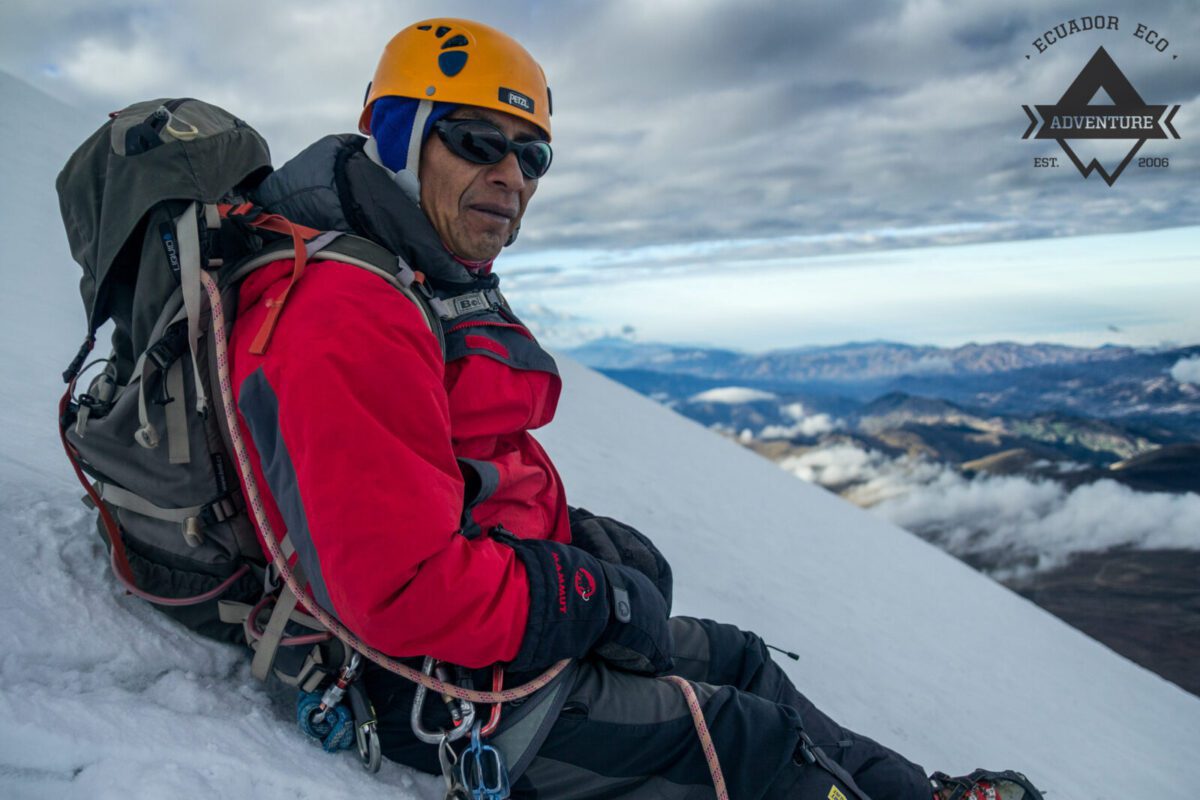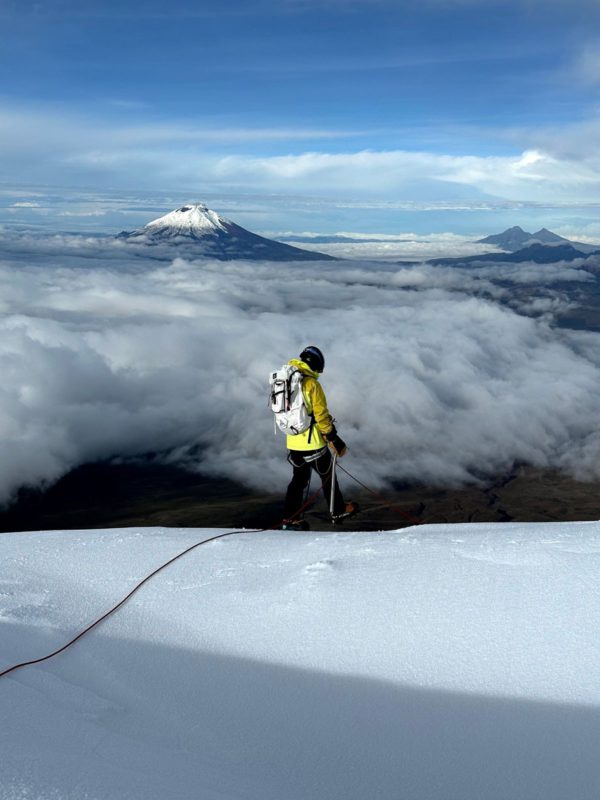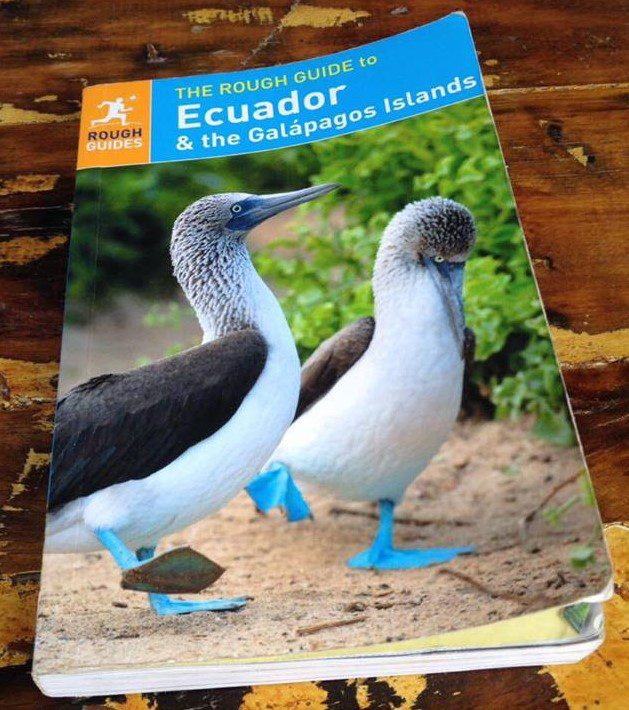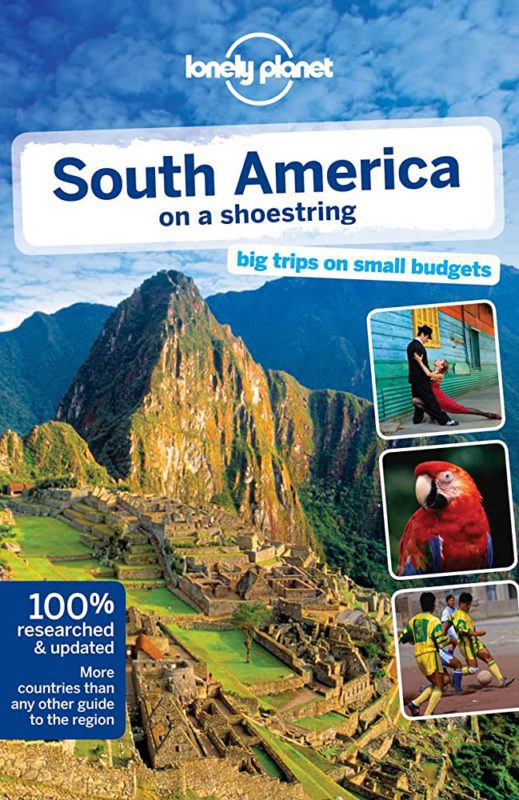MOUNTAIN CLIMBING IN ECUADOR
Mountain climbing in Ecuador is a popular activity that draws adventure seekers and nature enthusiasts from all over the world. The country is home to a number of stunning peaks, including the Cotopaxi volcano, the highest active volcano in the world. Climbing in Ecuador offers a unique opportunity to explore the country's breathtaking landscapes and experience its rich culture.
Ecuador is a small country located on the west coast of South America. It is bordered by Colombia to the north, Peru to the south and east, and the Pacific Ocean to the west. Despite its small size, Ecuador has a diverse range of landscapes and ecosystems, from lush rainforests and sandy beaches to snow-capped peaks and high-altitude deserts. The Andes mountain range runs through the center of the country, and it is here where most of the country's popular climbing destinations are located.
Climbing Volcano Cotopaxi
The most well-known climbing destination in Ecuador is Cotopaxi, which is part of the Cotopaxi National Park. Cotopaxi is an active volcano that stands at 5,897 meters (19,347 feet) tall. Climbing Cotopaxi is a challenging and rewarding experience, but it requires proper training and preparation. The climb typically takes two to three days, with the first day spent acclimatizing at the base camp and the second day spent climbing to the summit. The climb can be physically demanding, but the stunning views from the top make it all worth it.

Climbing Mount Chimborazo
Another popular climbing destination in Ecuador is Chimborazo, which is the highest mountain in Ecuador and the farthest point from the center of the Earth. Chimborazo stands at 6,268 meters (20,564 feet) tall and is part of the Chimborazo Wildlife Reserve. Climbing Chimborazo is a challenging feat that requires a high level of physical fitness and technical climbing skills. The climb typically takes three to four days, with the first day spent acclimatizing and the following days spent climbing to the summit. The views from the top of Chimborazo are simply breathtaking, with panoramic views of the surrounding mountains and valleys.
The ascent of Chimborazo typically begins between midnight and dawn, as climbers strive to reach either the secondary summit of Veintimilla at 6,230 meters (20,440 feet) or the primary peak, Cumbre Maxima, around sunrise. The descent back to Chimborazo's Whymper Refuge at 5,000 meters (16,400 feet) usually takes between 2 to 3 hours. What distinguishes this climb is its non-technical nature, allowing climbers to attain high altitudes without confronting sheer vertical walls that demand advanced technical skills like ice climbing. Weather permitting, those who reach the summit are treated to awe-inspiring views of prominent peaks in the Ecuadorian Andes, including Cotopaxi Volcano, the extinct stratovolcano El Altar, and the active volcanoes of Tungarahua and Sangay.

Climbing Carihuairazo
Mount Carihuairazo, an extinct stratovolcano nestled in the central Ecuadorian Andes, sits just 10 kilometers away from Chimborazo, the nation's tallest peak. The trek towards the base of Carihuairazo offers a breathtaking journey, with the imposing northern face of Mount Chimborazo casting its shadow along the path. While the ascent to Carihuairazo's summit is not overly technical, it demands a solid level of fitness and acclimatization to the altitude, making it a favored choice for novice climbers.
Starting at approximately 3,500 meters above sea level, the trek gradually ascends to the summit of Carihuairazo, reaching an elevation of 5,020 meters. This adventure typically spans two to three days, contingent upon the group's pace and weather conditions. At the peak, climbers are treated to sweeping vistas of the Ecuadorian Andes, with neighboring volcanoes such as Chimborazo, Tungurahua, and Sangay dotting the landscape.
The foothills surrounding Carihuairazo fall within the "Reserva de Produccion Faunistica Chimborazo" (Chimborazo Fauna Production Reserve), which has spearheaded one of the continent's most successful breeding initiatives. This program aims to reintroduce endangered camelids like the Vicuñas to the Andean region, where they faced extinction due to historical hunting pressures.

Climbing Cayambe
Other popular climbing destinations in Ecuador include Cayambe, Antisana, and Illiniza Norte and Sur. These peaks are all located in the Andes and offer a variety of climbing experiences for climbers of all levels. Cayambe, for example, is a snow-capped volcano that stands at 5,790 meters (18,996 feet) tall. The climb typically takes two to three days, with the first day spent acclimatizing and the second day spent climbing to the summit. Antisana, on the other hand, is a more technical climb that requires ice climbing skills and experience. The peak stands at 5,704 meters (18,714 feet) tall and offers stunning views of the surrounding glaciers and valleys.
One of the unique aspects of climbing in Ecuador is the opportunity to experience the country's rich culture and history. The country is home to a number of indigenous communities that have lived in the Andes for thousands of years. Many climbing expeditions in Ecuador include a visit to these communities, where climbers can learn about their traditional way of life and experience their unique culture. Climbers can also explore the country's vibrant cities, such as Quito, which is the capital of Ecuador and a UNESCO World Heritage Site.
When planning a climbing trip to Ecuador, it is important to keep in mind the country's climate and weather patterns. Ecuador has a tropical climate, but the weather in the Andes can be unpredictable and can change quickly. It is important to bring appropriate gear for the climb, including warm clothing, a waterproof jacket, and a sturdy pair of hiking boots.

Climbing Antisana
Antisana, a formidable presence in the Ecuadorian Andes, commands attention with its rugged beauty and imposing stature. As one of Ecuador's most renowned peaks, Antisana entices adventurers with its dramatic scenery and challenging terrain. Reaching a formidable height of 5,704 meters (18,714 feet), this stratovolcano offers climbers a thrilling ascent characterized by icy slopes, towering glaciers, and breathtaking vistas.
The journey to Antisana's summit is not for the faint-hearted, requiring climbers to navigate treacherous crevasses and steep ice walls. Unlike some of Ecuador's other peaks, Antisana presents a more technical challenge, demanding proficiency in ice climbing and mountaineering skills. However, for those willing to brave the elements and push their limits, the rewards are unparalleled, with panoramic views of the surrounding Andean landscape stretching out as far as the eye can see.
Beyond the physical challenges of the climb, Antisana offers climbers a chance to connect with Ecuador's rich natural heritage and diverse ecosystems. As they ascend higher, adventurers are treated to glimpses of unique Andean flora and fauna, including majestic condors soaring overhead and hardy plants clinging to rocky cliffsides. With its towering peaks and untamed wilderness, Antisana beckons climbers to embark on an unforgettable journey of exploration and discovery amidst the stunning landscapes of the Ecuadorian Andes.







